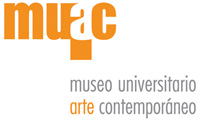Enrique Ježik:
Obstruct, Destroy, Conceal
11 June–November 2011
Museo Universitario Arte Contemporaneo, MUAC
Insurgentes Sur 3000
Centro Cultural Universitario
Delegación Coyoacán. C.P. 04510
México D.F.
T +52 (55) 5622 69 39 & +52 (55) 5622 69 72
difusion [at] muac.unam.mx
www.muac.unam.mx
• It is organized in six sections relating to the concepts of violence devices, spaces and operations.
In the last two decades Enrique Ježik (Cordoba, Argentina, 1961) has deployed a complex work of exploring the structures and devices of power, surveillance, repression, control and violence, from within the polymorphic practice of contemporary sculpture. For this artist, sculpture is a way of thinking power and violence as a stubborn drive on body matter. His performances, videos, and specific interventions that involve tactics—ranging from the use of bullets to Braille writing—testify to a historical period where the means of destruction and control technologies create the spaces, metaphors, devices and paths of politics.
The exhibition Enrique Ježik: Obstruct, Destroy, Conceal displays for the very first time an extensive review of the works and projects of an artist that has played a key role in the narrative of Mexican contemporary art.
Organized in six sections relating to the concepts of violence devices, spaces and operations (“Obstruction,” “Destruction,” “Concealment,” “The Enemy’s Body,” “Operations Theater” and “Sacrificial Constructivism”), the exhibition—curated by Cuauhtémoc Medina—travels over the territory of objects, forces and images, put together by Ježik while musing on the symbolic and technical relationship of sculpture with domination devices.
The keenest focus of Ježik’s recent work has been the exploration of visual and physical power, and both the iconography and the effects of the weapon as a prosthesis of the body and an instrument of destruction. The weapon appears in his work in a multiple sense: as an equivalent predecessor to the sculptor’s hammer and chisel of the sculptor and as a sculptural artifact of power and violence. While the use of rifles and pistols has long been present in art—all over the second half of the twentieth century—Ježik emphasizes the physical dimension of arms as a historical and aesthetic vector.
“We live, in a single schizophrenic gesture, in a civilization simultaneously obsessed with and haughtily indifferent to violence,” said Cuauhtémoc Medina. “We live in a historical period where the political alternatives are dissolved and the main purpose of society would seem to be security and control, where power claims to exist in order to address the alleged proliferation of internal and external enemies, managing and consciously or unconsciously transforming all social conflict in a military or law enforcement issue. This climate is the political moment outlined in Ježik’s work, not in offering tactics to escape this hegemony, but in witnessing it through sensitive operations.”
Complementing the exhibition, MUAC will release the book Enrique Ježik: Obstruct, Destroy, Conceal, a comprehensive collection of the works of the Argentinean-Mexican sculptor. Edited by Cuauhtémoc Medina, this highly illustrated volume includes an interview and philosophical, historical and aesthetic essays by José Luis Barrios, Néstor García Canclini and David Goldberg.
Enrique Ježik: Obstruct, Destroy, Conceal is part of the core exhibitions within Fantasmas de la libertad (Ghosts of Freedom), a cycle that gathers artistic proposals that not only suggest specific points of view, but engage in taking a stance with regard to current common conflicts throughout Latin America.

